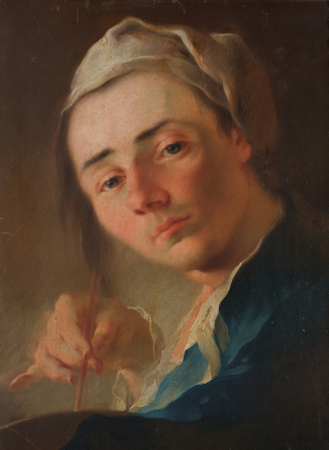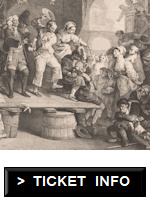After conservation and restoration work, the paintings of the influential Baroque artist Franz Anton Maulbertsch return to the spotlight in Upper Belvedere’s IN-SIGHT exhibition series.
- Marks his 300th birthday
- Maulbertsch was ahead of his time
- and inspired the likes of Kokoschka
- Runs April 12 – Sept 29, 2024
- Book Upper Belvedere tickets* online
- See also:
- Upper Belvedere overview
- Art exhibitions in Vienna
Baroque influencer

(Franz Anton Maulbertsch, Allegorie auf eine Preisverteilung an der Wiener Akademie unter Wenzel Anton Fürst von Kaunitz-Rietberg, around 1790; press photo courtesy of and © Johannes Stoll / Belvedere, Wien)
In the early summer of 1724, the cries of a newborn baby rang out from Langenargen (in today’s Baden-Württemberg) on Lake Constance, possibly scaring the ducks and sending ripples across to the nearby fisher boats.
Franz Anton Maulbertsch (1724-1796) went on to make waves of a bigger kind, becoming one of the more influential Baroque painters in central Europe. (Visit Langenargen today and you’ll find a school named after him.)
Maulbertsch soon left the banks of Lake Constance to study at the Academy of Fine Arts Vienna before building a successful and remunerative career as a painter and professor (eventually returning to the academy in that capacity).
Much of that success came from Maulbertsch’s dramatic use of light and colour, especially in his early years.

(Franz Anton Maulbertsch, early self-portrait, around 1750; Belvedere, Wien, on loan from a private collection; press photo courtesy of and © Belvedere, Wien)
The expressiveness and artistic flourishes soon attracted the attention of the church (in the positive sense, rather than the burn-the-heretic sense).
Numerous ecclesiastical commissions followed for frescoes and altarpieces throughout the Habsburg lands around Vienna, not least because the ravages of war with the Ottomans had left many (church) buildings to the east in need of repair.
Maulbertsch drifted back into more classical approaches as he aged. Even so, many still rate him as one of the painters whose style paved the way for the innovations that eventually produced the Wiener Moderne. Oskar Kokoschka, for example, wrote the foreword to a 1960 tome on the artist.
As luck would have it, Belvedere has a significant collection of Maulbertsch paintings. And with the artist’s 300th birthday approaching rapidly, an exhibition seems like a fine gift to honour the occasion.

(Franz Anton Maulbertsch, Die Akademie mit ihren Attributen zu Füßen Minervas, 1750; press photo courtesy of and © Belvedere, Wien) 8528
Those paintings recently returned from the hands of the analysts and conservators, giving the curators the chance to add another layer of explanation to the works.
As such, the exhibition slips easily into Belvedere’s IM BLICK (IN-SIGHT) series that adds fresh research perspectives to the objects on display.
The selection of works certainly reveals some intriguing paintings.
From a historical perspective, we have sketches for giant church frescoes that no longer exist. Or works proving that the copy (or homage) is not a modern phenomenon; the 1787/1790 The Blinding of Samson is clearly based on the same-named Rembrandt work from 1636.
On the artistic front, Maulbertsch’s faces seem strangely modern, almost grotesque or cartoonish in places. Something we might expect today and not back in the 1750s.
Dates, tickets & tips
Enjoy the work of Maulbertsch from April 12th to September 29th, 2024. An entrance ticket for or from Upper Belvedere includes this special exhibition.
(Booking service provided by Tiqets.com*, who I am an affiliate of)
If you’d like to see Maulbertsch’s work out in the wild, then pop into, for example, the Piaristenkirche in Vienna’s 8th district. That same church once hosted a Haydn premiere and practical music composition exams taken by a certain Anton Bruckner.
How to get to the paintings
Simply follow the directions for Upper Belvedere. Once inside, go forward and left on more or less the same floor to find the special exhibition.
Address: Prinz Eugen-Straße 27, 1030 Vienna
